What makes a good parking lot? Is it accessibility, user-friendly design or safety and security provisions? These bespoke car park projects epitomize smart multifunctional design that adds to the city’s infrastructure.

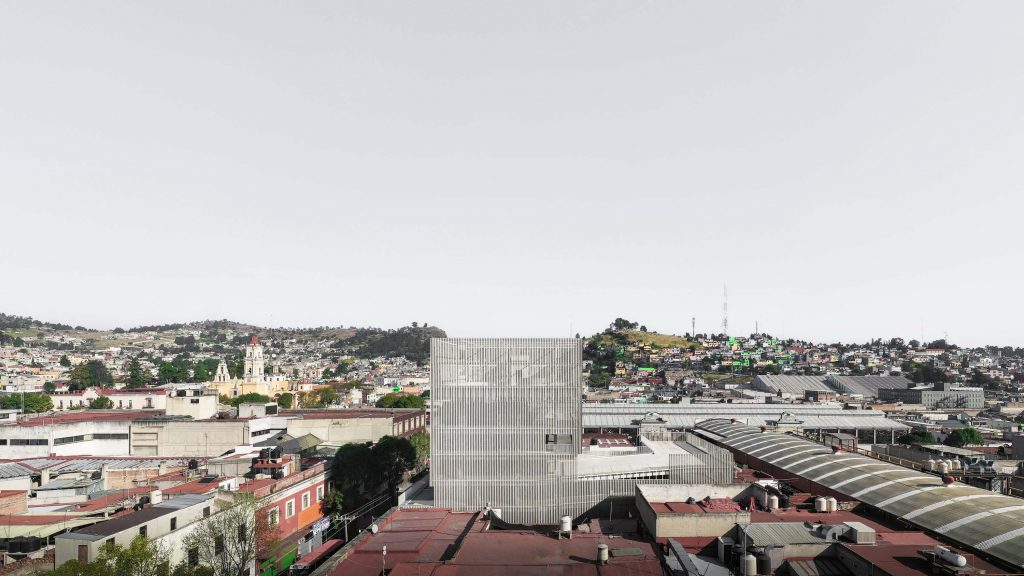
Estación San José by FRPO (also header image)
Spanish architecture studio FRPO has combined a concrete car park with offices, co-working and cultural and commercial spaces topped it with a publicly accessible garden at the rooftop with panoramic views of Toluca de Lerdo, the capital city of the Estado de Mexico. Estación San José is a mixed-use infrastructure in the city center of the most populated entity of the whole Mexican Republic, which aims to become a new cultural, economic and activity hub, both at local and metropolitan levels.

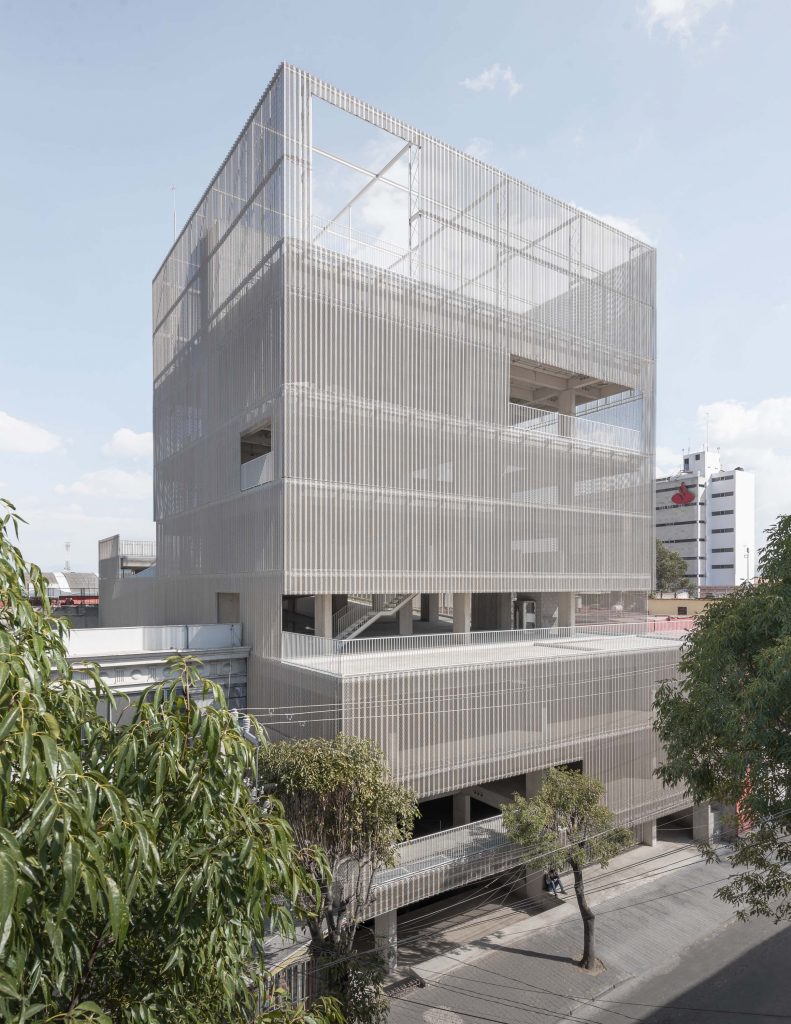
Estación San José by FRPO
Floor plans are designed to be flexible, with room for shops, cafes and cultural spaces alongside co-working offices. A naked concrete super-structure with a clean, meaningful geometry relates to the urban surroundings, rising above and overlooking them. The structural frame gives character to the building and unifies the complex, arranged as a field of pillars supporting a double family of slender beams.

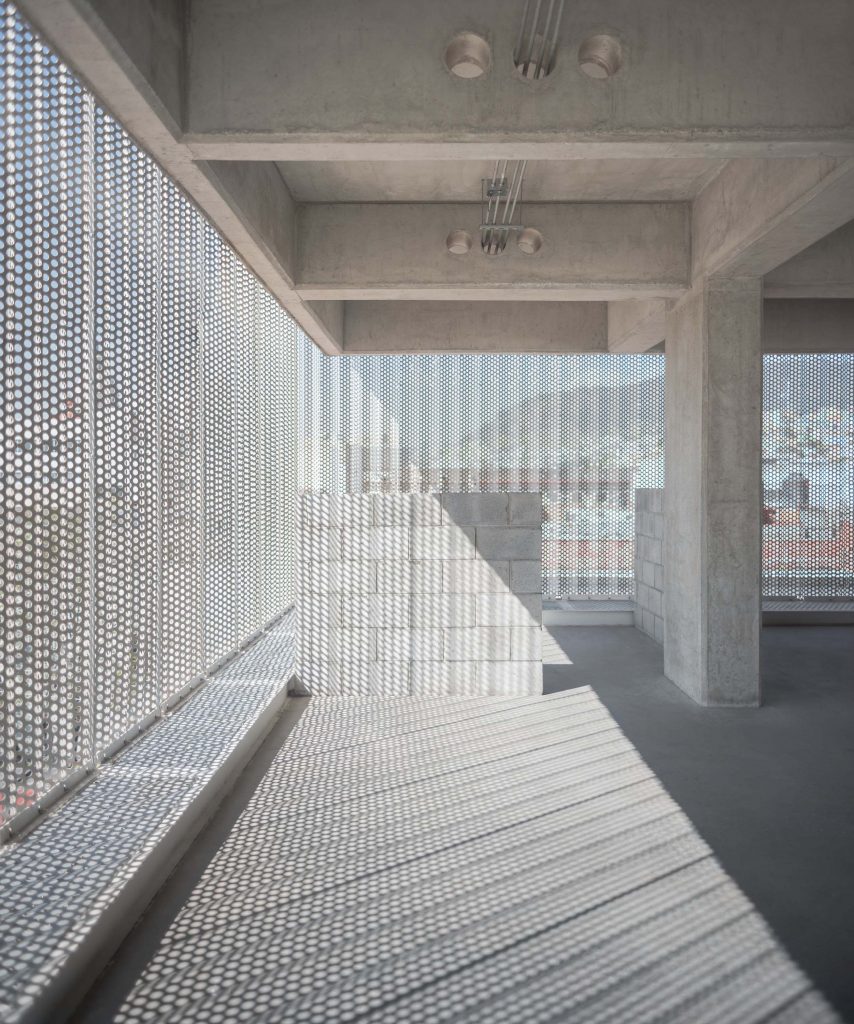

Estación San José by FRPO
Over them, continuous slabs are folded to create the parking area and are further perforated to generate diagonal relations and vertical spaces. A gentle lightweight metallic skin encloses the resulting volume, framing the most appreciated views: the Cathedral, the Cosmovitral and the Nevado de Toluca volcano.
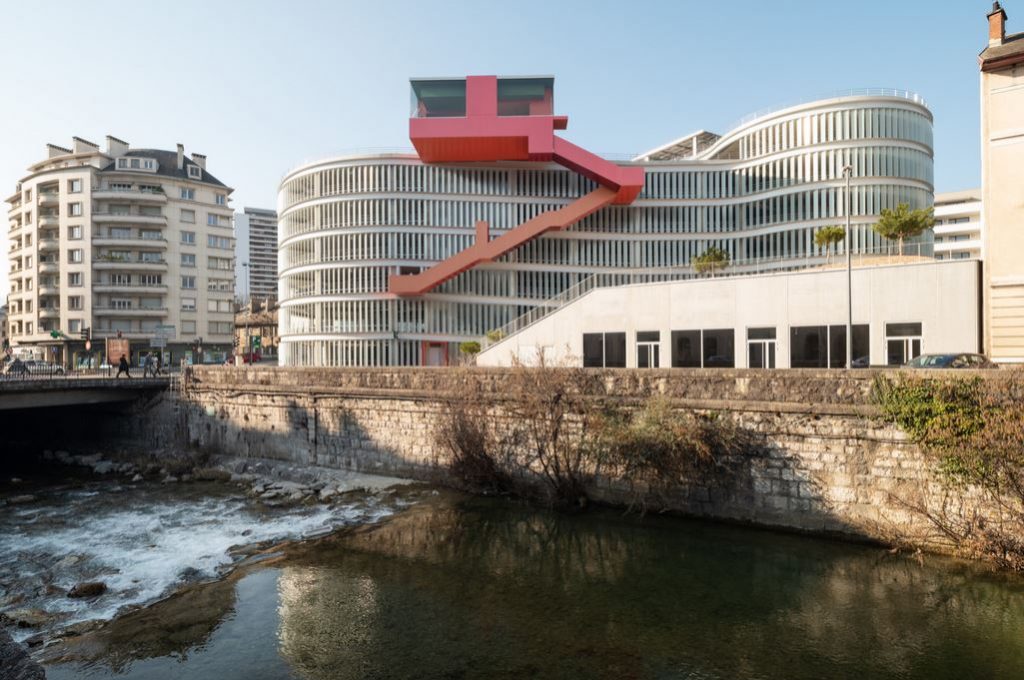
QPark Ravet by Hérault Arnod Architectes
Set as a curving and translucent volume in the historic center of Chambéry, France, the QPark Ravet is a new 499-space parking complex designed by local practice Hérault Arnod Architectes, jointly with artist Krijn de Koning.
Considering the historical context that includes a 12th century castle and 19th century buildings lining the street, the architects sought to balance out the purely utilitarian quality of the garage by featuring a sculptural red belvedere on the street-castle axis created in collaboration with the artist.
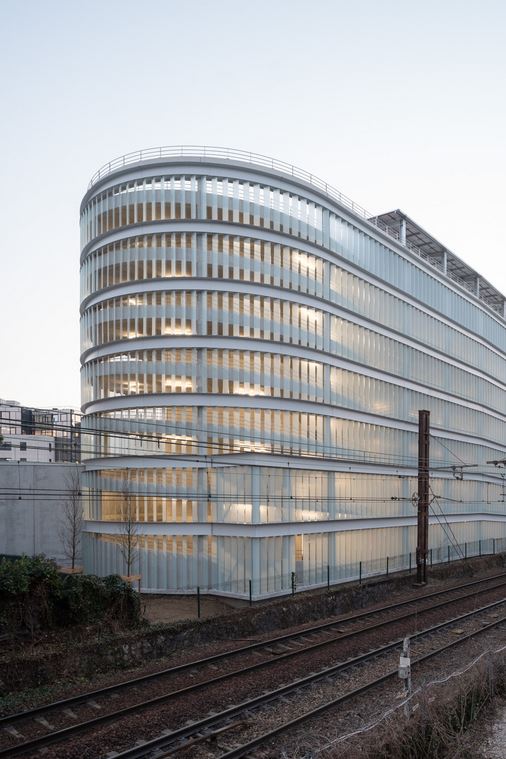
QPark Ravet by Hérault Arnod Architectes
The triangle floorplan of the structure and its rounded corners that correspond with the neighboring buildings’ rounded edges are meant to minimize the mass effect and make the building appear smaller. U-shaped metal profile wraps around the building from street level to the top floor creating a translucent façade and further blending the new structure into its context.
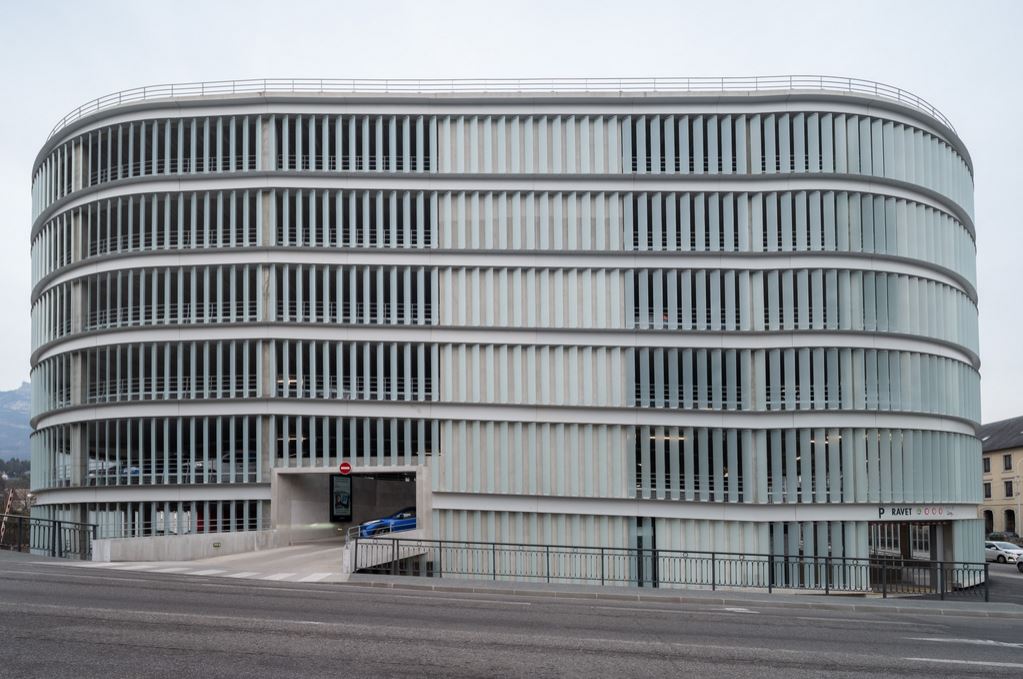
QPark Ravet by Hérault Arnod Architectes
The façades are clad in vertical strips 60% of recycled glass that are enameled to be opalescent placed at 45°. The empty gaps create a variety of additional views of the city and a scenic mountain backdrop. By day, the functionality of the building is on full display. By night, perceptions change thanks to indoor lighting turning the building into a lighthouse.

QPark Ravet by Hérault Arnod Architectes
Hidden inside the triangular patio is a garden planted with undergrowth vegetation including ferns, periwinkles, maples, hydrangeas, and more. The facing south terrace features Mediterranean-type vegetation with umbrella pines, fig trees, lavender, and grasses.

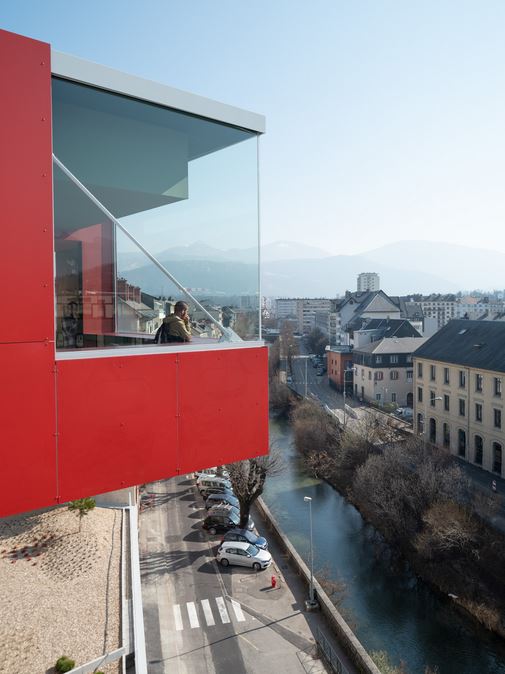
QPark Ravet by Hérault Arnod Architectes
Attached to the main building is a sculptural cantilevering belvedere by artist Krijn de Koning. Painted vibrant red, the striking addition is designed to endow the functional building with a landmark quality The belvedere can be accessed via an external staircase on the second floor without going through the parking garage. From above, it offers a majestic panorama of the historic city, the river, the castle, and the Alps. The architectural gesture is based on the complementarity between the curved, minimal, and translucent car park façades and the sculptural sky bar, orthogonal and colored. This assembly of the car park and the belvedere gives the building its unique identity.
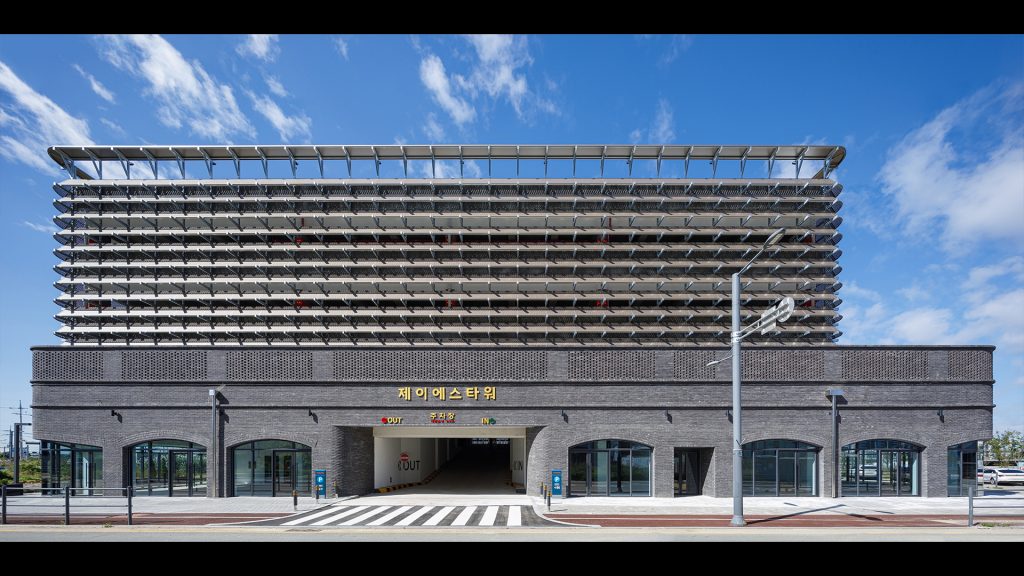
Multistorey car park by Urban Ark Architects
Seoul-based studio Urban Ark Architects has reinterpreted the concept of scaffolding in its project of a multi-story parking complex in the center of a large-scale industrial building area in Gyeonggi-do, South Korea. To make the structure stand out among the industrial buildings, the team covered the stacked levels of the parking lot in a grid of perforated steel plates that look as if a horizontal aluminum perforated band were wound around the three upper floors.

Multistorey car park by Urban Ark Architects
Supporting exposed rafters that overlay most of the car park’s exterior surface are set up at an angle to change transmittance according to the light. As the sun sets, the boundary gradually disappears and becomes transparent and the parking lot seems to float in the center of the industrial complex.

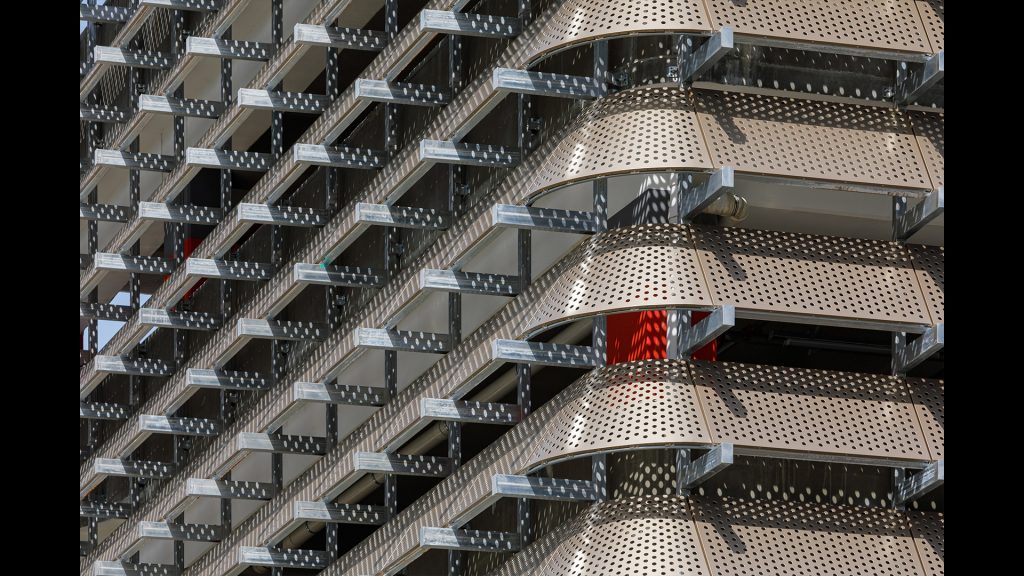
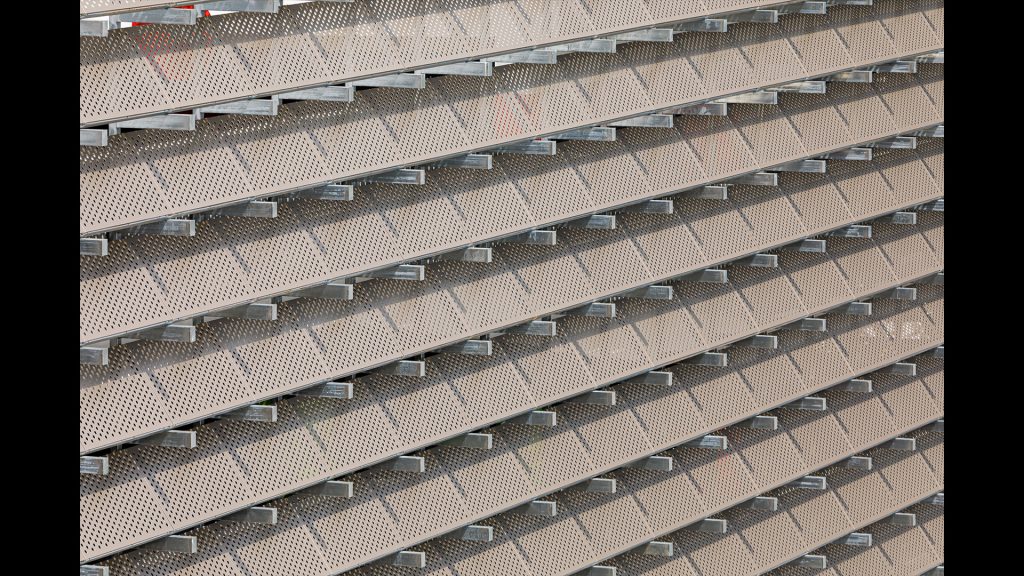
Multistorey car park by Urban Ark Architects
On the pedestrian axis, the ground level accommodates an array of commercial facilities hidden behind a facade of dark brickwork and arched glass shop fronts.